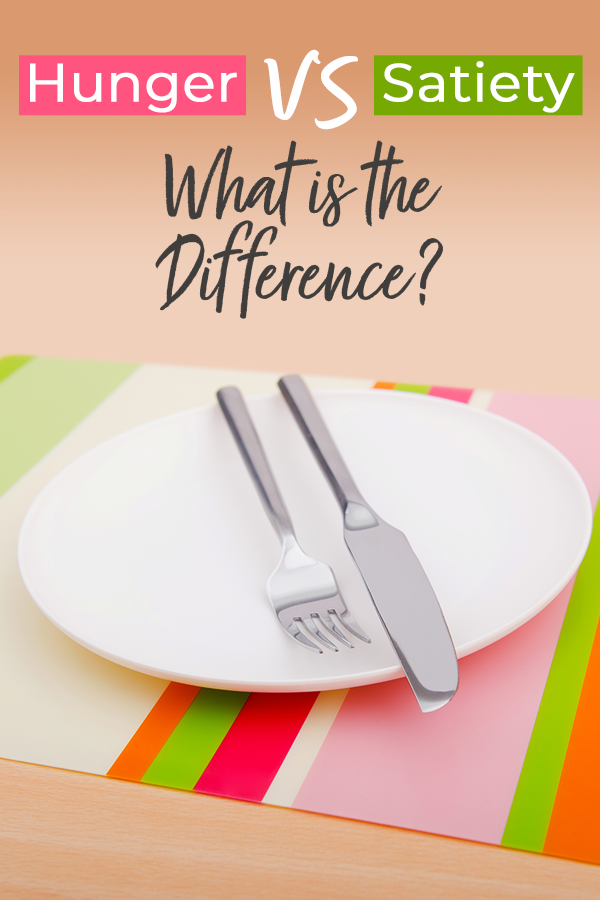
Hunger vs. Satiety – What is the Difference?
May 15, 2013Hunger vs. Satiety?
There is a difference between hunger vs. satiety. Our bodies provide cues to be able to check our hunger vs. satiety level. Our cars have a fuel gauge to let us know where the fuel is at, our bodies really don't come equipped for that.
People who struggle with weight often have difficulty identifying the difference between physiological hunger and psychological hunger. It is important for your weight loss success to know and recognize the difference between true hunger and head hunger. By using the scale below, you can start to eat between hunger vs. satiety. It takes practice and checking in with yourself to use the hunger scale successfully.
This is sometimes referred to as head hunger vs. physical hunger. Having gone through bariatric surgery, it is critical for us to know the difference between these two types of hunger. We need to be able to recognize them so we can lose weight AND maintain our weight loss. Head hunger is also known as emotional eating.
A simple way to look at the two types of hunger is to use this Hunger and Satiety Rating Scale. It can help you to identify what type of hunger you are experiencing.
Physiological hunger or real hunger starts to occur about two to four hours after your last meal. Symptoms include an empty or rumbling feeling in your stomach. If you ignore this signal, your body then sends you a stronger signal in the form of a headache, dizziness or lightheadedness. This type of hunger is your body's way of telling you it is time to nourish your body. So go eat some protein.
Psychological hunger or head hunger occurs at any time and has no physical symptoms. Obsessing about food, emotional situations, certain personal triggers, or food cravings may cause you to think that you are hungry when you're really not. Watching TV and wanting to eat is head hunger. Grazing is head hunger.
To assist you in identifying which type of hunger you're feeling and what action you should take with that feeling, look at our Hunger and Satiety Rating Scale.

Hunger vs. Satiety Scale
1=Starving, dizzy, irritable
2=Very hungry, unable to concentrate
3=Beginning signals of hunger
4=Increased physical cues of hungry are becoming intense
5=Content, neither full nor hungry
6=Comfortably full, you are satisfied
7=You are full, you feel as though you possibly should have eaten a little less
8=Uncomfortably full, you are stuffed
9=Very uncomfortable, you regret having eaten so much
10=Stuffed to the point of feeling sick
Where are you right now on this chart? At number 6 you have satiety, if you are above this number on the chart you have overeaten. If you are at level 6, you are neutral, nether hungry or full. If you are at level 7, then you are beginning to get hungry and need to consider eating soon. If you let your hunger go for a while you will start to feel the physical signs of hunger.
Where do your habits fit into this chart? If you are waiting to eat until you are "starving", irritable, or unable to concentrate; you will eat too fast and then you will likely eat beyond a comfortable feeling of fullness just to get rid of those bad physical feelings.
Start paying close attention; start eating when you have early signals of hunger (level 7) and stop eating when you are comfortably full (level 5).
Keep a written record of your feelings of hunger, using this scale. This will help you to recognize if you are waiting too long to eat, or eating beyond a comfortable, satisfying level. Record what and how much you are eating when you are too hungry versus the times you are just beginning to feel hunger.
This process will assist you in adjusting your eating schedule to accommodate your true need for food and ignore the head hunger.

 | ABOUT THE AUTHOR Cathy Wilson, PCC, BCC, had RNY surgery in 2001 and lost 147 pounds. Cathy is a regular contributor to the OH Blog and authored the "Mind Matters" column in ObesityHelp Magazine. Cathy is a licensed pilot and loves flying. She is a member of the American Society for Metabolic and Bariatric Surgery (ASMBS) and the Obesity Action Coalition (OAC).Read more articles by Cathy! |



